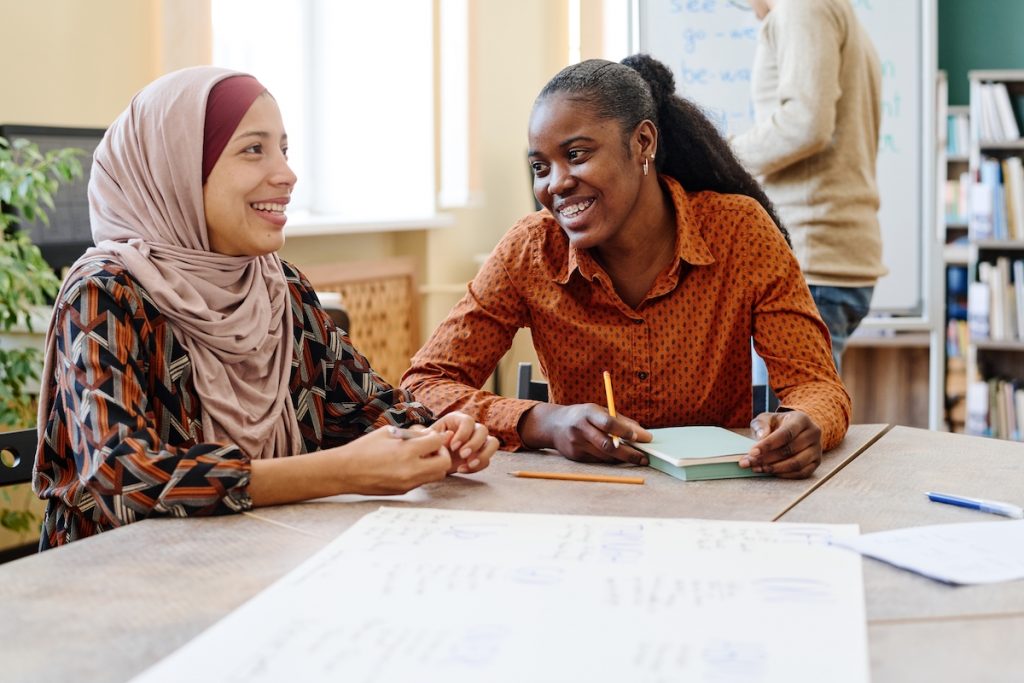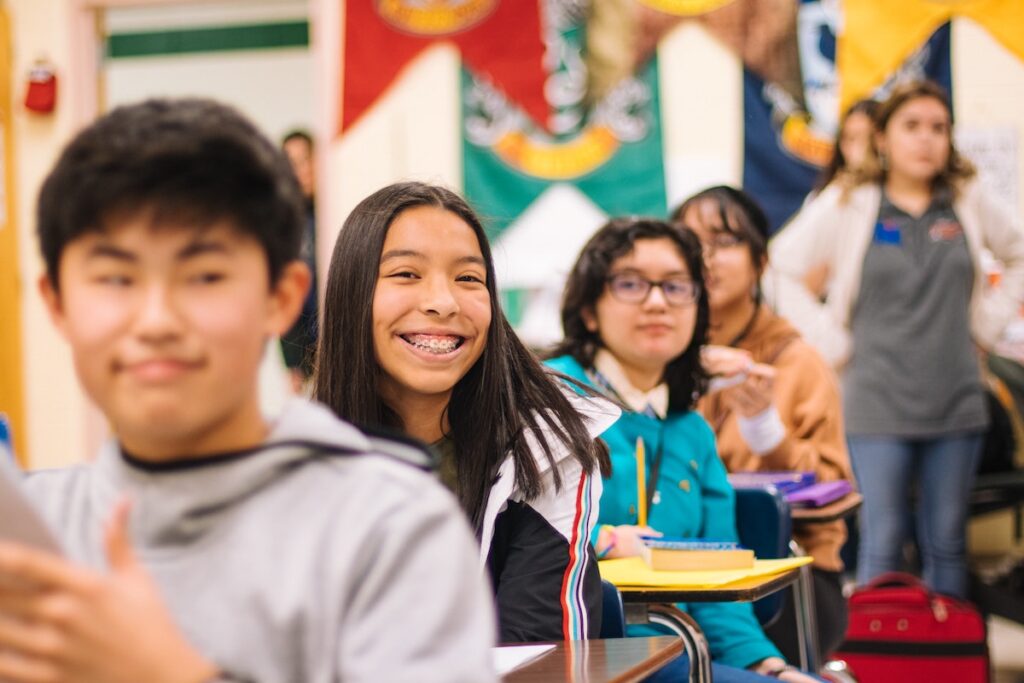Globally, over 100 million individuals have been forcibly displaced due to war, persecution, and natural disasters, navigating harrowing and often traumatic journeys. Studies have consistently shown that refugees are at a heightened risk of developing post-traumatic stress disorder (PTSD), depression, and anxiety (Hoell et al., 2021). Despite these challenges, there is a remarkable, albeit less recognised, phenomenon known as ‘post-traumatic growth’ (PTG). A process where individuals experience significant personal development following severe trauma.
Post-traumatic growth offers a lens through which we can understand how adversity fuels growth, leading to enhanced personal strength, improved relationships, new life possibilities, spiritual development, and a renewed appreciation for life (Tedeschi & Calhoun, 1996). This transformative process suggests that the human spirit cannot only endure, but also thrive from the depths of hardship. Recent research, such as the study by Giacco et al. (2018), explores this dichotomy within refugee populations, emphasising how traumatic experiences shape mental health outcomes. However, understanding PTG in this context requires a nuanced approach, considering the various stages of a refugee’s journey from pre-migration adversities through post-migration resettlement challenges. Each phase laden with unique stressors that influence their psychological resilience and growth.
This systematic review by (Sultani et al., 2024) aimed to update the work of (Sims & Pooley, 2016) by examining the most recent studies on PTG among refugees. It focused on understanding the processes that mediate PTG and assessing the role of therapeutic interventions. This review is especially pertinent given recent calls for tailored interventions that address the complex psychological and social needs of refugees.

Post-traumatic growth can help us understand how adversity fuels growth, personal strength and a renewed appreciation for life.
Methods
The systematic review adhered to the PRISMA guidelines (Liberati et al., 2009) and conducted an updated search across databases including CINAHL Complete, Proquest 5000, PsychINFO, Scopus, and Web of Science. The review focused on studies published between 2013-2021, building on Sims & Pooley’s (2016) review of literature published prior to 2013 to capture a surge of new studies that address key areas identified by previous reviews, e.g. the role of resettlement experiences. The systematic review aimed to answer the following research questions:
- What is known about post-traumatic growth (PTG) across different refugee populations?
- What are the mediating processes of PTG among refugee populations?
- What is the role of therapy in promoting PTG among refugees?
Studies were included if they examined PTG among adult refugees, asylum seekers, or internally displaced persons (IDPs) and were published in English. Both qualitative and quantitative studies were considered, along with grey literature. Two independent reviewers performed a rigorous screening process using Covidence software. Discrepancies were resolved by a senior author. The Quality Assessment for Diverse Studies (QuADS) tool was used to evaluate the methodological rigor of the included studies.
Results
The literature search identified 427 potentially eligible studies. Of those, 26 studies were included in the review: 10 qualitative, 13 quantitative, and 3 mixed-methods studies, with sample sizes ranging from 5 to 805 participants. The studies were conducted across various countries, including the United States, Canada, the UK, Germany, Australia, and Turkey.
Post-Traumatic Growth (PTG) across different refugee populations
The review found that PTG manifests differently across refugee populations, influenced by factors such as religious commitment, gender, and socio-economic conditions. For instance, refugees who actively engaged in religious practices reported higher PTG, with their faith offering a framework to cope with trauma and rebuild a sense of purpose (Acquaye et al., 2018; Alsubaie et al., 2021).
Gender differences in PTG were noted across several studies, with higher PTG generally observed among women compared to men. Four studies directly compared Post-Traumatic Growth Inventory (PTGI) scores across genders, consistently identifying that women reported higher levels of PTG. However, the difference was only statistically significant in one study (Acquaye, 2017). Vishnevsky et al. (2010) suggests gender disparity may be attributed to the tendency for women to engage more frequently in emotion-focused coping and ruminative thinking, processes often linked to higher PTG (Sims & Pooley, 2017).
Refugees from socio-politically diverse regions—including the Middle East, Africa, and Southeast Asia, displayed variations in PTG, largely shaped by their cultural backgrounds and experiences during migration.
Processes mediating PTG
The review identified several key mediators of PTG, including religious coping, social support, and narrative reconstruction. Religious engagement was a significant coping mechanism across various refugee populations, offering comfort and hope. For example, refugees from predominantly Muslim regions reported higher PTG through prayer and community worship (Alsubaie et al., 2021).
Several studies demonstrated the crucial role of education and employment. Refugees with access to stable employment and educational opportunities exhibited greater resilience and better coping mechanisms. Employment provided a sense of purpose and structure, which contributed to psychological recovery, while education enabled refugees to rebuild their lives with new skills and knowledge. These factors were consistently identified as facilitators of PTG and are critical for integrating refugees into their new communities (Prasetya et al., 2020; Wen et al., 2020).
Therapeutic interventions promoting PTG
Two studies directly examined the role of therapeutic interventions in promoting PTG. Hijazi et al. (2014) found that Narrative Exposure Therapy (NET) was effective in promoting PTG and reducing PTSD symptoms. NET helps individuals reconstruct coherent narratives of their trauma, enabling them to view their experiences from a position of growth.
Paloma et al. (2019) demonstrated the effectiveness of training settled refugees as peer mentors to lead cultural peer-support groups for newly arrived refugees, significantly enhancing PTG in participants. This highlights the importance of peer mentorship and social networks in fostering resilience and psychological recovery. This two-phase intervention involved cultural peer-support groups, which led to significant improvements in PTG.

Narrative, peer and community-based interventions enhanced post-traumatic growth in refugee and asylum seekers.
Conclusions
Sultani et al., (2024) meta-analysis of the 26 included studies, concluded that:
Quantitative results reveal a positive correlation between PTG and religious commitment and coping, and the effectiveness of narrative and community-based interventions in facilitating PTG. Qualitative results facilitate insight into the complex ways refugees find meaning and strength after trauma through religion, comparison-based thinking, helping others, and storytelling. Findings highlight the need for future research and interventions to recognise the distinct PTG experiences of different refugee populations.

This review provides insights into coping mechanisms that help refugees grow after trauma, such as religion, employment and psychological support.
Strengths and limitations
This systematic review effectively explored the complexities of post-traumatic growth (PTG) among refugee populations, providing valuable insights into how refugees cope with trauma. One of the major strengths of this review was the comprehensive search strategy. By including a diverse range of studies—qualitative, quantitative, and mixed methods—the review was able to offer a multi-dimensional view of PTG that captured both statistical trends and personal lived experiences (Mallett et al., 2012). The use of the Quality Assessment for Diverse Studies (QuADS) tool to evaluate the rigour of included studies is another strength, as it ensured that the findings were based on methodologically sound research. The inclusion of grey literature, such as dissertations and theses, also broadened the scope of the review, capturing insights from studies that might not have been published in traditional academic journals, thereby reducing publication bias. This approach allowed for a more inclusive representation of refugee experiences (CASP, 2018).
The review’s limitations, however, raise important questions on bias and generalisability. The exclusion of non-English studies is a significant limitation that could have introduced selection bias, especially considering the global presence of asylum-seekers and refugees. This exclusion potentially leaves out key insights from non-English-speaking regions with distinct cultural and socio-political characteristics. Cultural differences were also underexplored in the review. The diversity of refugee populations, including differences in race, ethnicity, religion, and country of origin, means that refugees respond to trauma in varied ways depending on their cultural context. For example, refugees from countries with a strong emphasis on community support or religious observance may experience PTG differently compared to those from more individualistic cultures (Acquaye, 2017).
Furthermore, the inclusion of mixed samples of refugees and asylum seekers without distinguishing their unique challenges could have impacted the generalisability of the findings. Asylum seekers face greater uncertainty and stress due to their legal limbo, which differs significantly from the experiences of those with refugee status (Steel et al., 2011). Without separating these groups, the findings may obscure the distinct stressors and coping mechanisms associated with each, reducing the specificity of the interventions that can be applied to support them. Treating asylum-seekers and refugees as a homogenous group could also call for a misclassification bias. In reality, these populations are highly heterogeneous, with variations in race, ethnicity, and socioeconomic status that influence mental health outcomes. For example, in another study of migrant mental health in Norway significant variations were found in mental health diagnoses based on factors such as language proficiency, income levels, and country of origin.
Lastly, younger refugees often experience trauma differently from adults and may benefit from alternative therapeutic approaches, such as expressive therapies like art or play; exclusion of the younger population was a notable limitation in this review.

The exclusion of younger refugees from the review leaves a critical gap in understanding the dynamics of PTG in children and adolescents.
Implications for practice
Narrative interventions and community-based approaches help individuals externalise their traumatic experiences, thus separating their identity from their trauma. This method not only allows refugees to articulate their stories in a structured and supportive environment but also promotes a sense of empowerment and self-efficacy. Sultani et al.’s (2024) review suggests that peer support groups provide a safe space where refugees can share their experiences and offer mutual support, which is crucial for building resilience needed for PTG. Furthermore, training settled refugees as peer mentors and conducting cultural peer-support group sessions was shown to be effective. This is another strong sign that Experts by Experience, particularly individuals who have been through the asylum process, should be involved in the co-design of mental health services for this population, to ensure that interventions are both culturally congruent and tailored to the real needs of refugees.
Clinicians should work closely with refugees to address practical barriers such as employment, language skills, and access to social services, but also stressors associated with uncertain immigration status. The development of vocational programs and partnerships with local businesses can provide refugees with the stability and sense of purpose needed for psychological recovery (Hoell et al., 2021). The specialist NHS refugee service where I work, partners with community organisations and the local authority’s resettlement team to establish community groups. As a result, we are able to facilitate culturally-sensitive spaces for psychoeducation, as well as an accessible referral pathway to unserved healthcare needs. In my experience, one of the most effective narrative-based interventions is the “Tree of Life” approach. This method encourages refugees to articulate their life stories through metaphor, using a tree to represent their roots, skills, aspirations, and relationships (Hughes, 2014). Incorporating narrative and community-based approaches, could ensure that treatment is grounded in the refugees’ lived experiences and cultural contexts.
We should advocate for the inclusion of interventions that focus on social cohesion in standard mental health services (Castillo et al., 2019). Piloting open access or Trieste models of healthcare, ensuring equitable access regardless of immigration status. This is particularly crucial given that asylum seekers often face more severe symptoms of PTSD and depression, as highlighted by studies such as those by (Knipscheer et al., 2015).

Support with practical life aspects is essential in mitigating the impact on mental health and promoting post-traumatic growth.
Statement of interests
Jeremy Lyons is an Assistant Psychologist at Waltham Forest Refugee Psychological Therapy Service NELFT NHS. WFPTS offers specialist secondary care via a phased model of treatment for complex cases of post-traumatic stress disorder (PTSD), depression, anxiety, and traumatic bereavement in asylum seekers and refugees.
Acknowledgments
We would like to acknowledge Hayat Hussein from NELFT NHS for the support offered with shaping the final draft of this blog.
Links
Primary paper
Sultani, G., Heinsch, M., Wilson, J., Pallas, P., Tickner, C., & Kay-Lambkin, F. (2024). ‘Now I Have Dreams in Place of the Nightmares’: An Updated Systematic Review of Post-Traumatic Growth Among Refugee Populations. Trauma, Violence, & Abuse, 25(1), 795-812.
Other references
Acquaye, H. E. (2017). PTSD, Optimism, Religious Commitment, and Growth as Post-Trauma Trajectories: A Structural Equation Modeling of Former Refugees. Professional Counselor, 7(4), 330–348.
Castillo, E. G., Ijadi-Maghsoodi, R., Shadravan, S., Moore, E., Mensah, M. O., Docherty, M., Aguilera Nunez, M. G., Barcelo, N., Goodsmith, N., Halpin, L. E., Morton, I., Mango, J., Montero, A. E., Rahmanian Koushkaki, S., Bromley, E., Chung, B., Jones, F., Gabrielian, S., Gelberg, L., … Wells, K. B. (2019). Community Interventions to Promote Mental Health and Social Equity. Current Psychiatry Reports, 21(5), 35.
Cengiz, I., Ergun, D., & Cakici, E. (2019). Posttraumatic stress disorder, posttraumatic growth and psychological resilience in Syrian refugees: Hatay, Turkey/ Suriyeli siginmacilarda travma sonrasi stres bozuklugu, travma sonrasi buyume ve ruhsal dayaniklilik: Hatay, Turkiye. Anadolu Psikiyatri Dergisi, 20(3), 269–277.
Ersahin, Z. (2022). Post-traumatic growth among Syrian refugees in Turkey: The role of coping strategies and religiosity. Current Psychology, 41(4), 2398–2407.
Giacco, D., Laxhman, N., & Priebe, S. (2018). Prevalence of and risk factors for mental disorders in refugees. Seminars in Cell & Developmental Biology, 77, 144–152.
Hijazi, A. M., Lumley, M. A., Ziadni, M. S., Haddad, L., Rapport, L. J., & Arnetz, B. B. (2014). Brief Narrative Exposure Therapy for Posttraumatic Stress in Iraqi Refugees: A Preliminary Randomized Clinical Trial. Journal of Traumatic Stress, 27(3), 314–322.
Hoell, A., Kourmpeli, E., Salize, H. J., Heinz, A., Padberg, F., Habel, U., Kamp-Becker, I., Höhne, E., Böge, K., & Bajbouj, M. (2021). Prevalence of depressive symptoms and symptoms of post-traumatic stress disorder among newly arrived refugees and asylum seekers in Germany: Systematic review and meta-analysis. BJPsych Open, 7(3), e93.
Hughes, G. (2014). Finding a voice through ‘The Tree of Life’: A strength-based approach to mental health for refugee children and families in schools. Clinical Child Psychology and Psychiatry, 19(1), 139–153.
Knipscheer, J. W., Sleijpen, M., Mooren, T., ter Heide, F. J. J., & van der Aa, N. (2015). Trauma exposure and refugee status as predictors of mental health outcomes in treatment-seeking refugees. BJPsych Bulletin, 39(4), 178–182.
Liberati, A., Altman, D. G., Tetzlaff, J., Mulrow, C., Gøtzsche, P. C., Ioannidis, J. P. A., Clarke, M., Devereaux, P. J., Kleijnen, J., & Moher, D. (2009). The PRISMA statement for reporting systematic reviews and meta-analyses of studies that evaluate health care interventions: Explanation and elaboration. PLoS Medicine, 6(7), e1000100.
Malchiodi, C. A. (2005). Art therapy. In Expressive therapies (pp. 16–45). Guilford Press.
Mallett, R., Hagen-Zanker, J., Slater, R., & Duvendack, M. (2012). The benefits and challenges of using systematic reviews in international development research. Journal of Development Effectiveness, 4(3), 445–455.
Mccabe, L., Mosley, A., Gwon, H., Everly, G., Lating, J., Links, J., & Kaminsky, M. (2007). The tower of ivory meets the house of worship: Psychological first aid training for the faith community. International Journal of Emergency Mental Health, 9, 171–180.
Paloma, V., Morena, I., & López‐Torres, C. (2019). Promoting posttraumatic growth among the refugee population in Spain: A community‐based pilot intervention. Health & Social Care in the Community, 28.
Sims, K., & Pooley, J. A. (2016). Posttraumatic growth amongst refugee populations: A systematic review. In The Routledge International Handbook of Psychosocial Resilience. Routledge.
Steel, Z., Momartin, S., Silove, D., Coello, M., Aroche, J., & Tay, K. W. (2011). Two year psychosocial and mental health outcomes for refugees subjected to restrictive or supportive immigration policies. Social Science & Medicine (1982), 72(7), 1149–1156.
Tedeschi, R. G., & Calhoun, L. G. (1996). The Posttraumatic Growth Inventory: Measuring the positive legacy of trauma. Journal of Traumatic Stress, 9(3), 455–471.
Vishnevsky, T., Cann, A., Calhoun, L., Tedeschi, R., & Demakis, G. (2010). Gender Differences in Self-Reported Posttraumatic Growth: A Meta-Analysis. Psychology of Women Quarterly, 34, 110–120.


